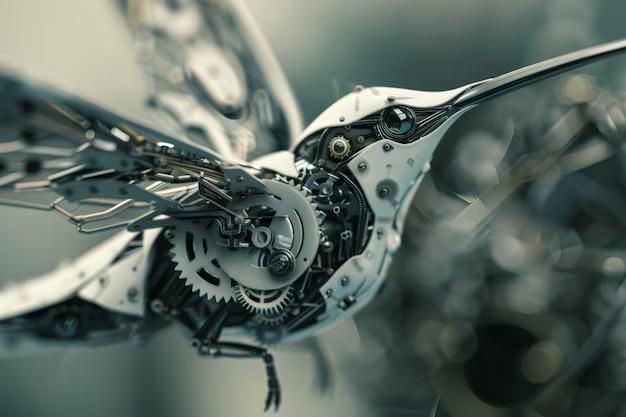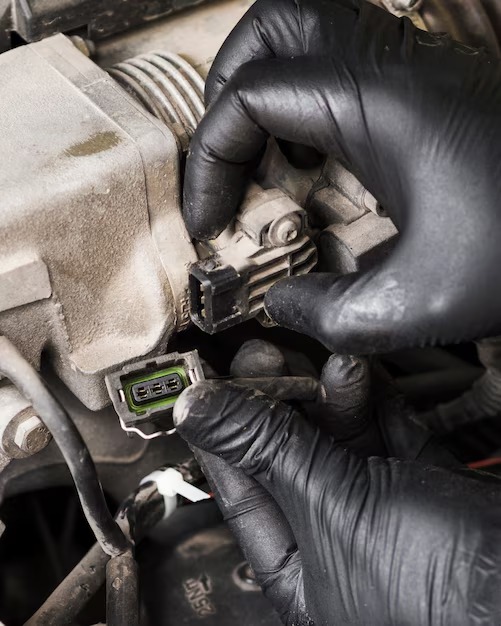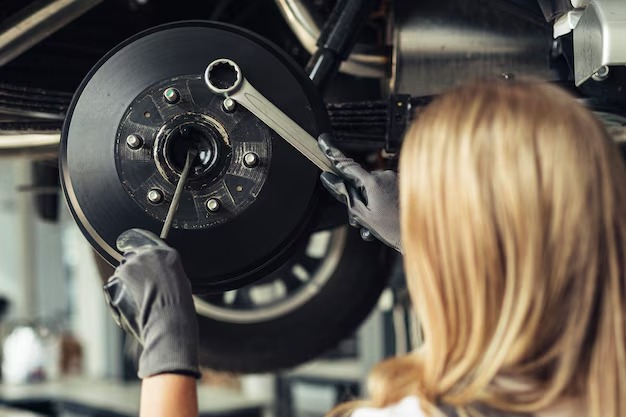How Big to Determine the Proper Size of Compressor do i Need For Painting a Car

How big to Determine the Proper Size of Compressor do i need for Painting a Car
When it comes to car painting, choosing the right size compressor is crucial. A good compressor will provide you with the necessary power and efficiency to get the job done effectively. However, with so many options available on the market, it can be overwhelming to know which size compressor is right for your specific needs. In this article, we will discuss some important factors to consider when choosing the right size compressor for car painting.
1. Air Volume (CFM): One of the most important factors to consider when choosing a compressor is its air volume, which is measured in Cubic Feet per Minute (CFM). The CFM rating tells you how much air the compressor can deliver in one minute. For car painting, you will need a compressor with a CFM rating that meets or exceeds the requirements of your spray gun.
2. Tank Size: The tank size of a compressor determines how much compressed air it can store. A larger tank size is beneficial as it provides a reserve of compressed air, which reduces the strain on the compressor’s motor and ensures a steady supply of air to the spray gun. However, a bigger tank also means a larger and heavier compressor, so choose a tank size that is suitable for your workspace and portability needs.
3. Horsepower and Motor: The horsepower (HP) rating of a compressor is an indicator of its power output. A higher HP rating generally means more power and faster air delivery. Additionally, consider the motor type, whether it is electric or gas-powered, as this can affect the compressor’s overall performance and convenience of use.
4. Noise Level: Compressors can be noisy, and if you are working in a residential area or a shared workspace, this can be a concern. Look for compressors that have noise-reducing features or are labeled as “quiet” to minimize disruptions to your surroundings.
5. Portability: Depending on your needs, portability may be an important factor to consider. If you will be moving the compressor around frequently or working in different locations, look for models that are compact, lightweight, and equipped with wheels for easy transportation.
By considering these factors and assessing your specific needs, you can choose the right size compressor for car painting that will provide you with consistent and reliable air supply for a flawless paint job. Remember to always check the manufacturer’s recommendations and guidelines for your specific spray gun to ensure compatibility and optimal performance.
Importance of Compressor Size for Car Painting Spray Psi
When it comes to car painting, choosing the right size compressor is crucial for achieving professional and high-quality results. The compressor size directly affects the performance, efficiency, and overall outcome of your car painting project.
1. Airflow and Pressure
The size of the compressor determines the amount of airflow and pressure it can provide. For car painting, a compressor with a high airflow rate is essential as it allows for a continuous and consistent flow of paint. This ensures smooth and even coverage, reducing the chance of paint streaks or uneven application.
Additionally, a compressor with adequate pressure is necessary to atomize the paint particles correctly. Proper atomization leads to better paint adhesion, resulting in a more professional finish. Insufficient pressure can cause paint clumping or overspray, compromising the overall quality of the paint job.
2. Tank Capacity
The tank capacity of a compressor is also an essential factor to consider for car painting. A larger tank allows for more air storage, which means the compressor does not have to continuously run to maintain adequate airflow and pressure. This reduces the strain on the compressor motor and helps prevent overheating.
With a larger tank, you can achieve a more consistent and constant airflow, minimizing any fluctuations that could affect the paint application. It also helps maintain a stable pressure, ensuring that the paint is properly atomized throughout the entire painting process.
On the other hand, if the tank capacity is too small, the compressor may need to run more frequently, leading to potential pressure drops and a less efficient painting process.
In conclusion, choosing the right size compressor is vital for car painting. It ensures proper airflow, pressure, and tank capacity to achieve a smooth and professional finish. Investing in a compressor that meets the demands of your car painting project can make a significant difference in the quality and efficiency of the paint job.
Factors to Consider in Choosing Compressor Size
When it comes to choosing the right size compressor for car painting, there are several important factors to consider. These factors will help you determine the capacity and power you need to achieve the desired results.
1. Airflow requirements: The most crucial factor in choosing a compressor size for car painting is the airflow requirements. The airflow is measured in cubic feet per minute (CFM) and determines how much air the compressor can supply. To ensure effective painting, you need a compressor that can deliver enough CFM to keep up with the demand of your paint gun.
2. Paint gun specifications: Each paint gun has its own CFM requirement that needs to be met in order for it to work efficiently. The recommended CFM for a paint gun is usually specified by the manufacturer. Make sure you check the specifications of the paint gun you plan to use and choose a compressor that can provide the necessary airflow.
3. Tank size: The tank size of a compressor determines how much air it can store and deliver at a time. A larger tank size is beneficial as it allows the compressor to have a higher reserve capacity, reducing the need for the motor to constantly run. This helps to maintain a steady supply of air and ensures smoother painting.
4. Motor power: The motor power of a compressor is measured in horsepower (HP) and determines the overall strength and capacity of the machine. A more powerful motor will be able to generate higher CFM, allowing for better performance. However, keep in mind that a more powerful motor will also require more electricity.
5. Noise level: Consider the noise level of the compressor, especially if you plan on using it in a residential area or a small workshop. Compressors can be quite noisy, so look for models with lower noise levels or ones that come with noise-reducing features.
6. Portability: If you need to move the compressor around frequently or if you have limited space in your workshop, consider the size and portability of the compressor. Smaller, portable compressors are easier to transport and store, but they may have limited tank capacity and airflow.
By considering these factors, you can choose the right size compressor for car painting that meets your specific needs and ensures high-quality results.
Understanding CFM Requirements for Car Painting
When it comes to car painting, one important factor to consider is the CFM (cubic feet per minute) requirements of your compressor. CFM is a measure of the volume of air that a compressor can deliver, and it directly affects the efficiency and quality of your paint job.
Why is CFM important for car painting?
Choosing the right CFM rating for your compressor is crucial because it determines how much airflow your spray gun will receive. If the CFM is too low, it may result in poor atomization of paint, leading to an uneven and textured finish. On the other hand, if the CFM is too high, it can cause excessive overspray, wasting paint and making it more challenging to control the application.
Furthermore, CFM requirements vary depending on the type of paint gun you use. High-volume, low-pressure (HVLP) guns require a higher CFM compared to conventional spray guns. HVLP guns are designed to minimize overspray and deliver a higher transfer efficiency, but they also demand more air volume for optimal performance. Understanding the specific CFM requirements of your paint gun is essential for achieving the best results.
Determining the CFM requirements
To determine the CFM requirements for your car painting project, you need to consider several factors:
- Spray gun specifications: Consult the manufacturer’s specifications for your particular spray gun model to find the recommended CFM range. This information is usually provided in the gun’s user manual or on the manufacturer’s website.
- Purpose: Consider the size and complexity of the project. Large-scale projects or those involving multiple coats may require a higher CFM to ensure sufficient coverage and quality.
- Air supply: Assess the capabilities of your current air compressor. Check the CFM rating to ensure it meets or exceeds the requirements of your spray gun.
- Add-ons: If you plan to use additional tools or accessories that require air, such as an airbrush or a paint pressure pot, take their CFM requirements into account when determining the overall CFM needed.
Remember, it’s better to have a compressor with a higher CFM rating than needed, as you can always adjust the pressure to meet the requirements of your specific project. However, an undersized compressor may limit your options and compromise the quality of your car painting.
By understanding the CFM requirements for car painting and selecting a compressor that meets those needs, you can ensure a smooth and professional finish for your automotive projects.
Evaluating the Horsepower of Compressors for Car Painting
When it comes to choosing the right compressor for car painting, one of the most important factors to consider is the horsepower of the compressor. The horsepower of a compressor is a measure of its power output, and it plays a significant role in determining the compressor’s performance and suitability for car painting jobs.
What is Horsepower?
Horsepower is a unit of power that was originally introduced by James Watt, the inventor of the steam engine, to compare the power output of his steam engines to that of horses. In the context of compressors, horsepower refers to the power output of the motor that drives the compressor. A higher horsepower rating indicates a more powerful motor and, therefore, a compressor that is capable of delivering higher air pressure and volume.
Choosing the Right Horsepower
When evaluating the horsepower of compressors for car painting, it is important to consider the specific requirements of the painting job. Factors such as the size of the paint gun, the type and thickness of paint being used, and the desired air pressure and volume are all important considerations.
If you are planning to use a small paint gun for touch-up work or painting small areas, a compressor with a lower horsepower rating, such as 1-2 HP, may be sufficient. However, if you are planning to paint larger areas or use a high-volume paint gun, a compressor with a higher horsepower rating, such as 3-5 HP, may be necessary to deliver the required air pressure and volume.
It is also important to consider the duty cycle of the compressor when evaluating horsepower. The duty cycle refers to the amount of time the compressor can operate continuously before requiring a cooling-off period. Higher horsepower compressors often have higher duty cycles, which is important for sustained painting jobs.
In conclusion, evaluating the horsepower of compressors for car painting involves considering the specific requirements of the painting job and determining the appropriate horsepower rating based on factors such as the size of the paint gun, the type and thickness of paint, and the desired air pressure and volume. By choosing a compressor with the right horsepower, you can ensure optimal performance and achieve professional-quality paint finishes.
Tips for Selecting the Right Size Compressor
When choosing a compressor for car painting, it’s important to select the right size to ensure optimal performance and efficiency. Here are a few tips to help you make the right choice:
Consider the CFM Requirement
CFM stands for cubic feet per minute and represents the volume of air that the compressor can deliver. It’s important to consider the CFM requirement of your painting equipment when selecting a compressor. Different paint guns and spray guns have different CFM requirements, so make sure to check the specifications of your equipment. Choosing a compressor with a higher CFM rating than required can ensure a continuous supply of air and prevent interruptions during the painting process.
Match the Tank Size with the Project
The tank size of a compressor determines the amount of air stored and available for use. For car painting projects, it’s crucial to have a compressor with an adequate tank size. Smaller tanks may not be able to provide a constant air supply and may require frequent refills, which can disrupt the painting process. On the other hand, larger tanks may offer a more continuous air supply but can be bulky and less portable. Consider the size of your project and the available space when choosing the tank size.
These tips should help you select the right size compressor for your car painting needs. Remember to consider the CFM requirement of your equipment and match the tank size with your project. With the right compressor, you can achieve a smoother and more professional finish for your car painting projects.
Q&A: How big of a compressor do i need to paint a car
What factors should one consider when determining the size of an air compressor?
When determining the size of an air compressor, factors such as the required air pressure (PSI), air flow (CFM), and the types of tools or applications it will be used for should be taken into account.
What does the term “60 gallon compressor” refer to?
The term “60 gallon compressor” refers to an air compressor with a tank capacity of 60 gallons, indicating its ability to store compressed air for various applications.
How does the size of an air compressor tank affect its performance?
The size of an air compressor tank, such as a 30 gallon or 60 gallon tank, affects the amount of compressed air it can store, providing a continuous supply of air for longer periods before the compressor needs to cycle on again.
What is the typical pressure rating for air compressors used for spray painting?
Air compressors used for spray painting typically have a pressure rating ranging from 30 to 60 PSI, depending on the specific requirements of the spray gun and paint application.
How does the size of an air compressor tank influence its suitability for auto body work?
For auto body work, a larger compressor tank, such as a 60 gallon compressor, is often preferred as it can provide a steady flow of compressed air for extended periods, ideal for tasks like sanding, painting, and operating air tools.
What role does the horsepower (HP) of an air compressor play in its performance?
The horsepower (HP) of an air compressor indicates its power output, affecting its ability to generate and maintain air pressure within the compressor tank, especially when operating air tools or powering pneumatic equipment.
What advantages does a larger compressor tank offer compared to a smaller tank?
A larger compressor tank, such as a 60 gallon tank, offers advantages like increased air storage capacity, allowing for longer run times and reduced cycle frequency, which can be beneficial for continuous or high-demand applications.
Where might one find air compressors with smaller tanks, such as 30 gallons?
Air compressors with smaller tanks, like 30 gallon compressors, can often be found at hardware stores, home improvement centers, or online retailers, with brands like Harbor Freight offering various options to suit different needs.
How does the size of an air compressor tank impact its portability?
Generally, air compressors with smaller tanks, like those with a 30 gallon capacity, tend to be more portable and easier to maneuver compared to larger models with 60 gallon tanks, making them suitable for smaller workspaces or on-the-go use.
What considerations should be made when selecting an air compressor for use with air tools?
When selecting an air compressor for use with air tools, factors such as the CFM (cubic feet per minute) rating, pressure requirements, and compatibility with the tools being used should be considered to ensure optimal performance and efficiency.
How do I determine what size air compressor I need for painting my car?
Determining the size of the air compressor you need to paint your car depends on factors such as the type of spray gun you’ll use, the CFM and pressure requirements, and the size of the area you’ll be painting.
What is the best air compressor for painting an entire car?
The best air compressor for painting an entire car is one that has enough capacity to sustain continuous operation, with adequate CFM and pressure ratings to support the spray gun and clear coat application.
What should I consider when choosing the best air compressor for auto body and paint work?
When selecting the best air compressor for auto body and paint work, consider factors such as the compressor’s CFM rating, tank size, horsepower (HP), and portability to ensure it meets the demands of the painting process.
How can I determine the size of the air compressor I need to paint a car?
You can determine the size of the air compressor you need to paint a car by considering factors such as the type of spray gun you’ll use, the air pressure and CFM requirements, and the size of the vehicle you’ll be painting.
What is the significance of the air compressor tank size when painting cars?
The air compressor tank size is significant when painting cars as it affects the compressor’s ability to deliver a steady flow of air, allowing for continuous painting without waiting for the compressor to catch up.
Is a 20 gallon compressor sufficient for painting a car?
A 20 gallon compressor may be sufficient for painting a car, depending on the CFM and pressure ratings, as well as the size of the spray gun and the extent of the painting job.
How long should I wait for the compressor to catch up when painting a car?
The amount of time you need to wait for the compressor to catch up when painting a car depends on factors such as the compressor’s tank size, CFM output, and the air consumption rate of your spray gun.
What is the advantage of using a larger compressor for auto painting?
Using a larger compressor for auto painting provides plenty of air supply, ensuring consistent air pressure and flow, which is essential for achieving a smooth and even coat of paint and clear coat.
Can I use a small air compressor for painting cars?
While it’s possible to use a small air compressor for painting cars, it may not provide sufficient air supply or pressure for larger painting jobs, resulting in interrupted painting sessions and potentially uneven paint application.
What is the best spray gun to use with an air compressor for painting cars?
The best spray gun to use with an air compressor for painting cars depends on factors such as the type of paint being used, the desired finish, and the compressor’s CFM and pressure capabilities. It’s essential to choose a spray gun that complements the compressor’s performance for optimal results.




